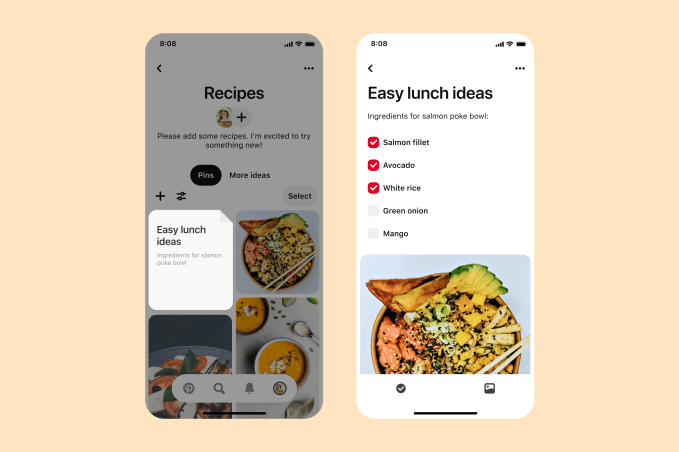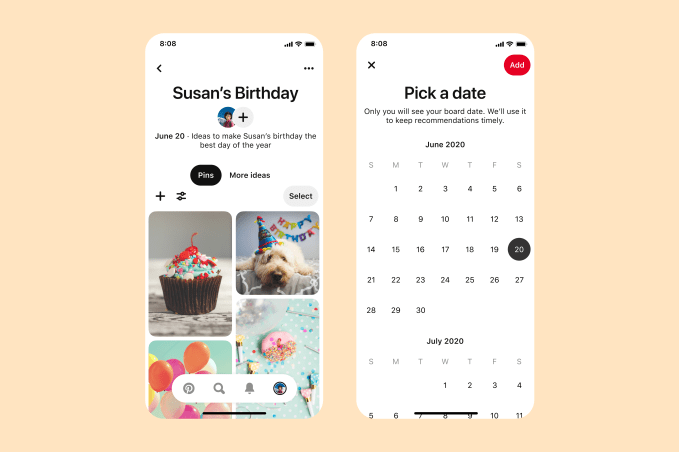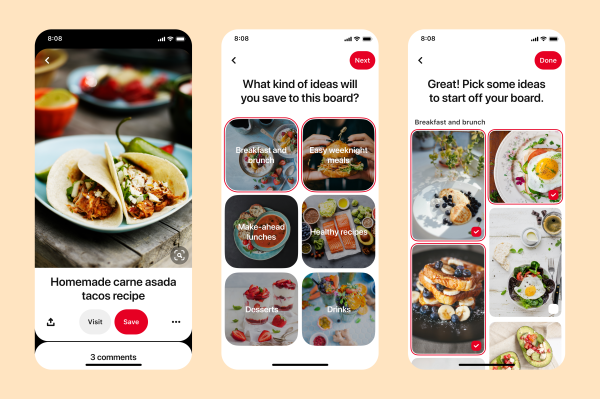Pinterest is introducing new features that make it easier for those planning recipes, virtual events and other quarantine activities. These include the ability to add a date or notes to a board as well as automated ways to better organize your pins on a given board, with the aid of machine learning technology.
The company has seen increases in particular types of activities on its platform amid the quarantine. For example, it’s seen a more than 50% increase in people using the site to plan virtual events — like virtual birthday parties, baby showers or virtual educational activities.
Meanwhile, it has also seen people planning ahead for their post-quarantine projects, as well as an overall 60% increase in the number of boards created versus the same time last year. Engagement with boards is also up nearly 75% on a year-over-year basis and up nearly 50% month-over-month.
The addition of board notes will allow Pinterest users to annotate their saves with personal notes — like adding a list of ingredients accompany a pinned recipe, a list of tasks for a project, a to-do list or anything else they want to note.

Also new is the ability to add a date to a board. This can help with project planning or to just keep boards better organized by dates. When projects wrap, it may be easier to find the old boards to archive if they have a date attached.

Finally, Pinterest is upgrading its board technology to suggest sections to add to a board.
For example, if you have a fairly broad topic — like “kids’ activities” — Pinterest may now recommend organizing the pins into sections like “art projects,” “outdoor games” and others. And when you’re starting a new board, Pinterest may suggest sections to add as soon as you save your first pin.

The company says it’s using its data on billions of saved ideas combined with machine learning and Pinterest’s own PinSage technology, in order to determine how pins should be grouped. This problem is challenging, Pinterest notes, because it has to accurately cluster together similar pins and predict how a Pinner may want to organize their board.
These new board features are rolling out globally starting today on web, iOS and Android.
The new features are meant to help Pinterest respond to the changes in consumer behavior since the COVID-19 pandemic, where people had temporarily turned away from planning for travel or in-person events, and instead are using their boards to organize for quarantine-related activities, like a child’s homeschooling or virtual events.
The launches follow Pinterest’s report this week of a solid Q1 amid the COVID-19 pandemic. The company grew its revenue 35% year-over-year to $272 million and grew its user base 26% year-over-year to 367 million, beating projections for both. However, it reported a loss of 10 cents per share, versus the expected loss of 9 cents per share.
But Wall Street wasn’t happy with Pinterest’s user growth, CNBC reported, which was up 6% year-over-year in the U.S., compared with 8% in the fourth quarter. Overall, Pinterest’s growth of 26% was the same annualized growth rate it saw in the fourth quarter — in other words, flat. This was unexpected, given Pinterest’s claims of pandemic-related record usage in March and the gains other social platforms have seen, including Facebook and Snapchat.
Pinterest also warned of a tough road ahead, due to pandemic-related advertising declines.
